Ultimate Guide to Training Clients on Using Their New Website

Building a stunning website for a client is just the first step; empowering them to navigate and utilize it effectively is where the real impact lies. Whether it’s a savvy entrepreneur or a large organization, each client’s success hinges on their ability to harness their digital presence with confidence.
As a web developer or designer, providing comprehensive training is key to ensuring that each client not only understands their new website but also feels excited about every click, drag, and drop. Think of this process as handing over not just a set of keys but the ultimate toolkit to drive their digital strategy home.
In this guide, we delve into the essentials of client training—from laying the groundwork for seamless onboarding to customizing training sessions that cater to varied learning curves. Get ready to enhance client autonomy, boost their confidence, and pave the way for a phenomenal online journey.
Identifying Client Needs and Goals
Before diving into training, it’s crucial to get a clear picture of what your clients hope to achieve with their new website. This understanding will tailor the training to fit their unique requirements and ensure you’re addressing the right skills.
Start by engaging in a conversation about their key business goals and how they envision the website contributing to these objectives. Are they looking to boost sales, improve user experience, or perhaps increase engagement through content? Each goal will have different training priorities.
Consider conducting a brief needs assessment. This can be as straightforward as a questionnaire or a more in-depth discussion. By identifying their level of technical expertise and experience with website management, you can adjust your training approach to meet them where they are.
In the process, don’t forget to ask about any previous challenges they’ve faced with past websites. This information will help you anticipate potential roadblocks and customize the training to prevent similar issues.
By aligning your training with their specific needs and objectives, you set the stage for a more effective, productive, and empowering experience.
Customized Training Sessions
Every client learns differently, making customized training sessions essential for delivering value. Tailor your approach to match their learning style, whether they prefer hands-on practice, visual aids, or step-by-step guides.
Start by breaking down complex concepts into manageable chunks. This helps clients grasp each element before moving on to more advanced functionalities. Encourage questions and provide real-life examples that resonate with their industry to make learning more relatable.
Hands-On Practice
Interactive sessions where clients actively engage with their website can significantly enhance understanding. Encourage them to perform tasks themselves while you guide them: this boosts their confidence and reinforces learning through action.
Offer resources like easy-to-follow manuals or video tutorials they can reference later. These materials not only serve as a helpful reminder but also empower clients to troubleshoot independently, fostering long-term skills.
Wrap up the session with a brief recap of the key points and encourage ongoing communication. Regular check-ins, even after the training has ended, can maintain their confidence and ensure they are utilizing the website to its fullest potential.
A personalized training session not only equips your clients with the necessary skills but also demonstrates your commitment to their success.
Hands-On Practice with Key Features
Practical experience is essential when it comes to mastering a new website. Focusing on key features will give clients the confidence to use their site effectively and efficiently.
Identify the critical features that align with their business goals and prioritize training on those first. For instance, if they plan to regularly update their blog, ensure they are comfortable with the content management system and its various functionalities.
Interactive Learning
Create an environment where clients feel comfortable experimenting. Guide them through typical scenarios they might encounter, such as updating product listings or adjusting settings on their contact forms. Provide tips and shortcuts to streamline these tasks for them.
Encourage role-playing exercises that reflect real-world situations. This hands-on approach not only reinforces learning but also helps uncover potential areas of confusion that you can address immediately.
By the end of these sessions, clients should not only understand how to perform these tasks but also how to troubleshoot common issues independently. Hands-on practice empowers them to fully embrace their new digital toolkit, paving the way for a smooth and successful website management experience.

Addressing Common Client Challenges
Every new skill set comes with its fair share of hurdles, and navigating a new website is no different. Anticipating and preparing for these common challenges can smooth the transition for your clients and preempt frustration.
One frequent issue is the fear of "breaking" the website. Encourage clients to experiment in a safe environment, such as a staging site, where they can test changes without consequences. This helps build confidence and reduces anxiety when making updates on the live site.
Understanding technical jargon can be another obstacle. Simplify complex terms and processes, using language that resonates with their expertise level. Providing a glossary of common terms can also act as a handy reference tool.
At times, clients may become overwhelmed by the sheer volume of information. Help them prioritize tasks, focusing on immediate needs and slowly expanding their knowledge base over time. Encourage them to keep a list of questions or issues to address in follow-up sessions, ensuring they feel supported throughout the learning process.
By proactively addressing these challenges, you create an empowering learning space, enabling clients to tackle their website management with ease and confidence.
Concluding Training and Ensuring Client Confidence
As the training journey reaches its conclusion, it’s essential to reinforce the knowledge and skills your clients have acquired. Highlight their progress and express confidence in their ability to manage their website effectively. This final boost can make all the difference in encouraging them to take charge.
Provide a summary of the key takeaways from your sessions, ensuring they’ve grasped the fundamental concepts. Consider creating a personalized checklist or a "quick-start" guide that they can readily access for those immediate tasks and reminders. This support will help solidify their newfound skills.
Another vital element is the open channel of communication. Reassure clients that you remain available for questions, concerns, or additional guidance. Whether through emails, scheduled check-ins, or a dedicated helpdesk, knowing they have ongoing support can significantly increase their confidence.
Reflect on any remaining areas of uncertainty and offer refresher sessions if needed. Learning is an ongoing process, and reinforcing tough concepts can further cement their understanding.
Finally, celebrate their successes, no matter how small. Recognizing clients’ achievements not only validates their effort but fosters a sense of accomplishment that propels them to continue evolving their digital presence.
In essence, your role extends beyond the initial training. By cultivating a supportive, encouraging environment, you empower clients to navigate their digital landscape independently and confidently, ensuring their online venture thrives.


